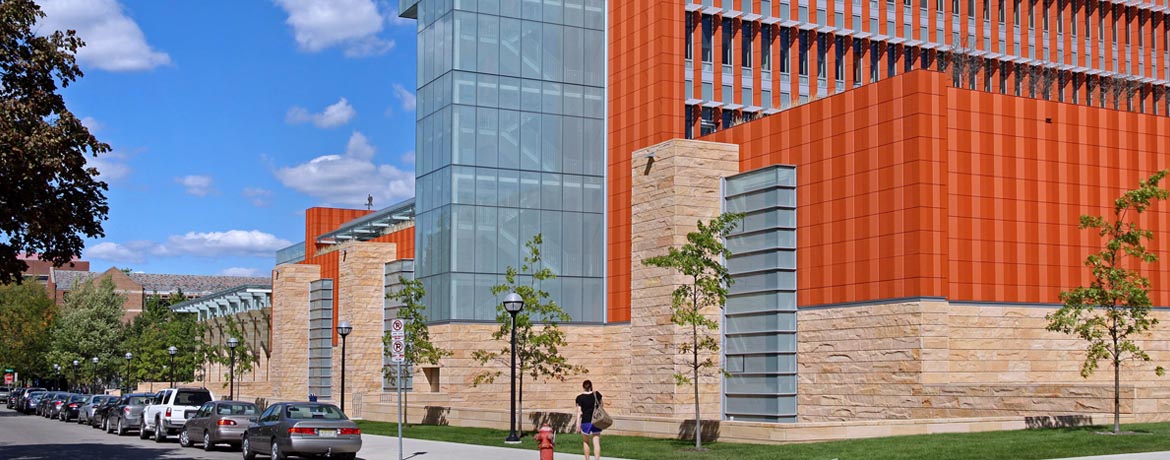Finding any parking space on a college campus, let alone a convenient spot close to academic buildings and student centers, can be close to impossible.
Colleges and universities are often self-contained communities, and that means the same considerations that go into city planning have to go into planning a campus. However, with limited space, funds and ever-changing student populations, planning becomes something of a guessing game.
With limited parking and constantly shifting class schedules, campus parking is already bad enough. The problem is compounded at automobile-dense schools – a whopping 95 percent of students bring cars to campus at colleges such as Mississippi State University and Spalding University in Kentucky. It’s also an issue at dormitory-less community colleges, where campuses often have more students than available spaces. And these figures come into play before administrators, faculty, staff and visitors get a shot at a parking spot. No matter the issue, the problems compound and ultimately interfere in the learning process: students and instructors can blame parking and transportation for their tardiness.
There are answers out there to help address the college parking problem, but the response often depends on the type of campus. When looking at city-based campuses and rural colleges, the challenges may be the same fundamentally, but key structural differences mean that a solution would need to be carried out in different ways. What issues does each type of campus face, and what can be done to help address each one’s exhausting parking problems?
Parking challenges on city and rural campuses

Population density is a constant issue in an urban environment. Cars spill over into on-street spaces, lots fill up quickly and streets are often sluggish with traffic, especially in busy cities that may also serve as county seats or state capitols. Some campuses, like Rutgers University in New Brunswick, maintain disparate locations that are difficult to navigate to without using a car. The high demand for vehicles and the campus’s property constraints leads to regular overcrowding and restricted lots, creating an issue where an open parking space is a rare treasure and peak traffic hours are a navigation nightmare.
For sprawling rural campuses, physical space isn’t as big an issue as it may be in a crowded city, but that doesn’t make parking easier or more pleasant. Centralized parking lots and public transportation dictate that walking is often necessary to get from car to classroom, but students are notorious for not wanting to walk far – whether that’s because it’s cold outside, they’re running late or they simply don’t feel like it. Moreover, rural campuses like the University of Vermont are focused on preserving historic and natural characteristics of their community, so even though they may have the space to build additional parking, it may run counter to the school’s preservation goals to do so.
The answer, then, in both urban and rural environments, is to more efficiently use the existing infrastructure to accommodate visitors, students and faculty.
Campus Parking Management Systems and Solutions That Work
Parking management systems can help ameliorate these problems and streamline a campus’ usage of existing parking infrastructure. For urban campuses, which rely on lots and garages, space and level guidance systems can help advertise when and where students, faculty, staff and visitors can find available spots. This way, drivers are unlikely to enter a full lot, reducing the amount of people circling in and out of lots looking for a space that doesn’t exist. Thanks to LED lights which identify the open spots, drivers can see right away just which space they need to go to. In the end, the reduced ingress and egress from lots also reduces total traffic. For a college campus, that means safer environments for pedestrians, as well as fewer late students and missed classes.
Employing a parking management system also solves the limited property issues present in both rural and city-based campuses. By making more efficient use out of existing parking facilities and roadways, most campuses will find they have sufficient capacity just by directing people to the right places. Parking management systems not only offer contextualized information in real time, but also show people at a glance just where space is underutilized.
Overall, parking management systems represent a more cost-effective way to gain a bird’s eye view of a total parking situation without the messy project of building out additional infrastructure. When school is in session and traffic is at its peak, a reliable parking management system can keep the cars – and the students – running on time.
